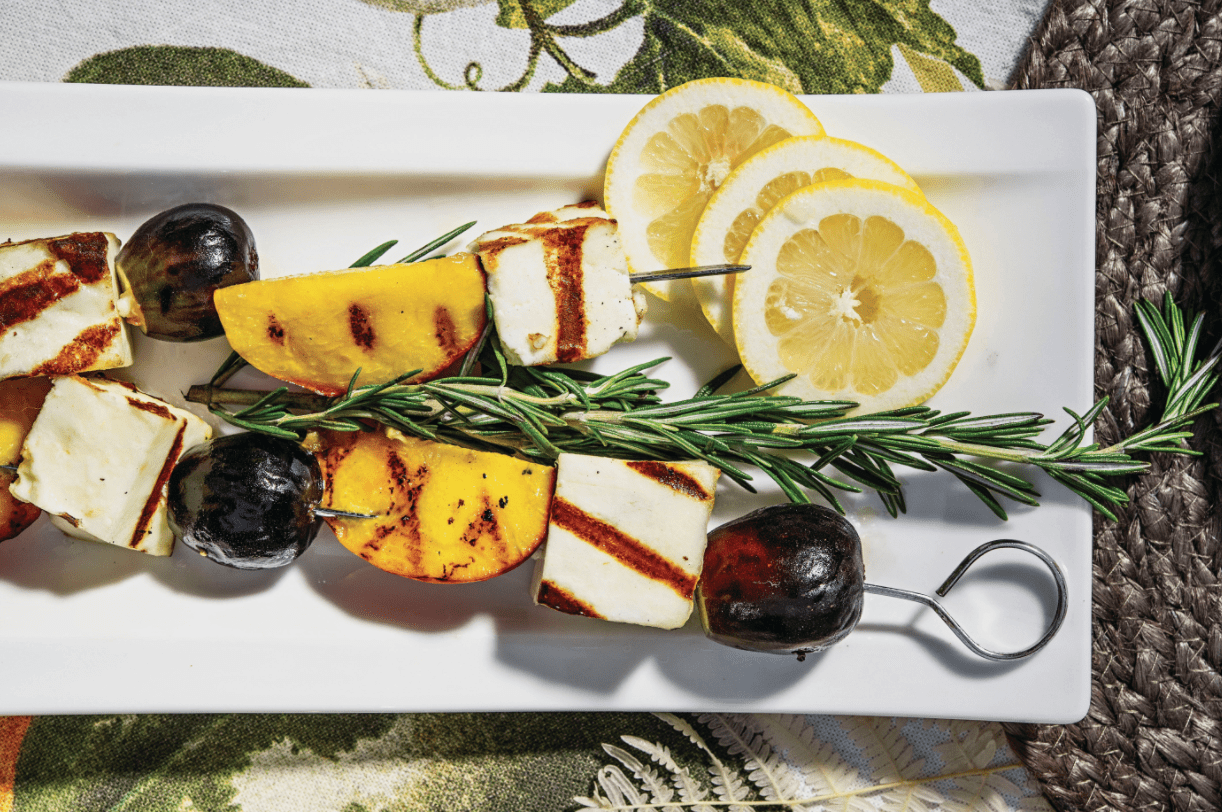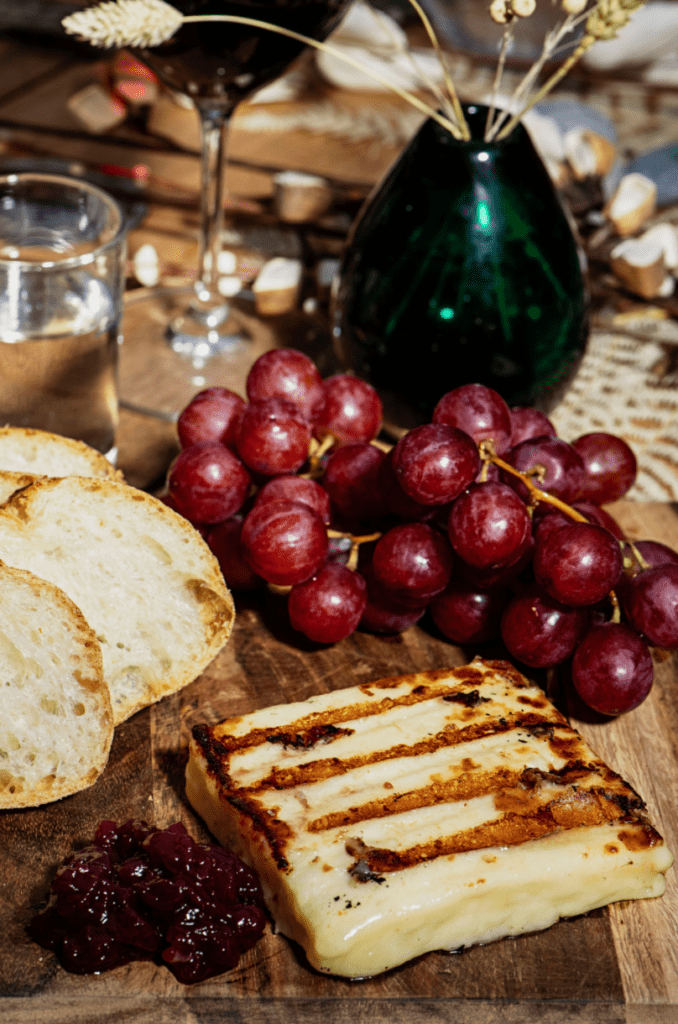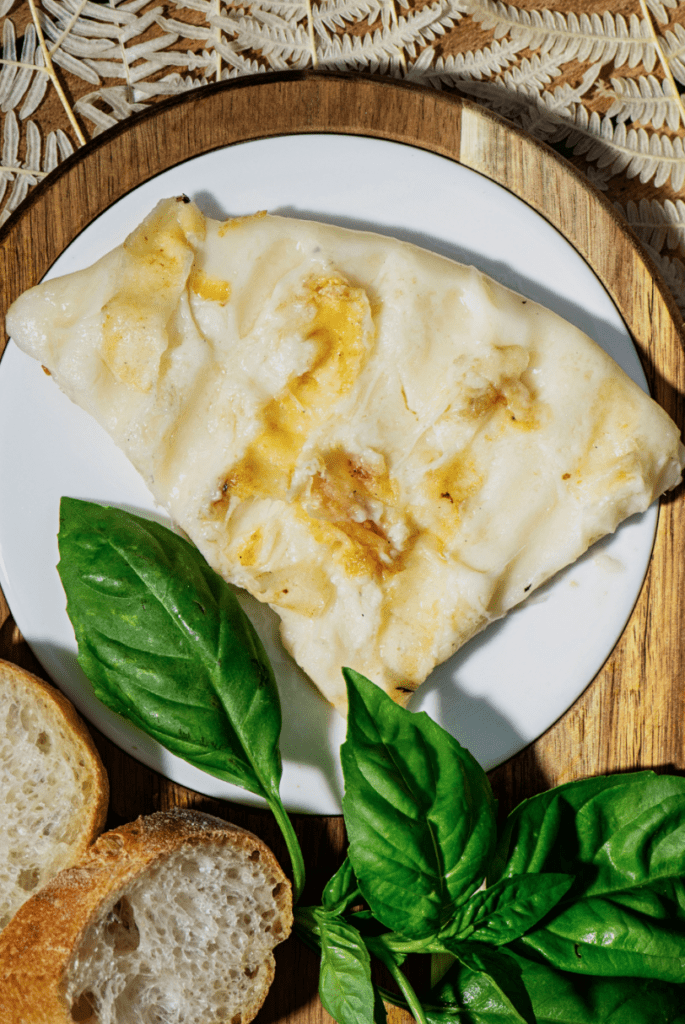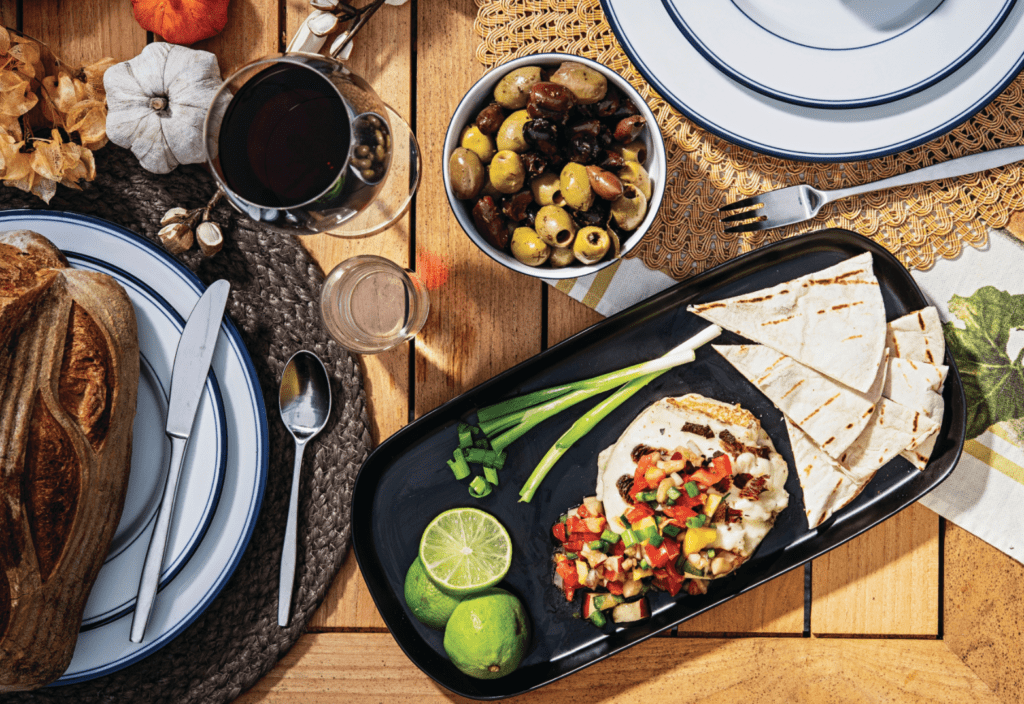
The castaway in Robert Louis Stevenson’s Treasure Island says, “Many’s the long night I’ve dreamed of cheese—toasted, mostly.” Chances are, he was referring to the classic British toasted cheese on bread. Or something like our grilled cheese, the oozy, gooey sandwich that pairs perfectly with Campbell’s tomato soup. Or perhaps something like Welsh rarebit. These comfort food specialties depend on a cheese that melts well, and perhaps a warm fire to eat them by. But there are other cheeses that, while meant to be enjoyed warm, don’t melt well—on purpose. These are cheeses that you can grill and, like their melted-cheese counterparts raclette and fondue, they are perfectly suited to entertaining.

Juustoleipä, or bread cheese, is native to Finland, where it often is enjoyed for breakfast with jam
Several cuisines include grilling cheeses; some of the more readily available varieties are Halloumi from Cyprus, Greek Kasseri, Italian provolone, queso panela from Mexico, and juustoleipä—a Finnish native also called “bread cheese.” Each of these will warm, soften, and develop in flavor when put to flame. This family of cheeses is often called “squeaky,” for the sound they make when chewed.
So, what makes these cheeses good for the grill? First, they all have a high melting point, which means that while they will soften somewhat, they will hold their shape over high direct heat. While a wheel of warmed Camembert oozing onto a platter is a truly beautiful thing, it would not fare well thrown right on the grill.
Halloumi, perhaps the best known of the grilling cheeses, is crafted by the pasta filata or “spun or stretched paste or curd” method. It is firm, springy, and a bit underwhelming when cold, but when grilled or heated, it takes on a different, more appealing character and is enjoyable on its own, atop a salad, or in a sandwich.
While it is produced elsewhere, authentic Halloumi is made only on the island of Cyprus with sheep’s milk, goat’s milk, or a mixture of both. Just this spring, following a campaign that took more than 15 years, halloumi was awarded PDO (Protected Designation of Origin) status by the European Union, which also gives Cyprus the right to stop other cheesemakers from selling the ancient, traditional cheese in the EU, the United Kingdom, and Australia. (Whether that will be successful remains to be seen.)

Greek Kasseri After Flambeéd and Seasoned
Kasseri, also PDO, is Halloumi’s Greek cousin. It’s traditionally made with unpasteurized sheep and goat’s milk and is pale yellow, in contrast to its bright white relative. Kasseri also has a lower melting point, so it’s better suited to warming in a pan than trying to sear on a grill. If you’ve ever dined in Chicago’s Greektown, you may have witnessed the dramatic presentation of saganaki, traditionally prepared with Kasseri, as it is doused in Metaxa, flambéed, and greeted by diners with cries of “Opa!” as it arrives tableside.

Kasseri ready for the grill
Paul Delios is the co-author, with wine expert Fotios Stamos of At the Greek Table: Contemporary Twists on Traditional Fare (And the Wine to Serve with Each Bite!) In the early 2000s he was the executive chef at Meze Estiatorio, widely considered one of New England’s best Greek restaurants. He agrees that while a dramatic and celebratory saganaki is good fun (and likely good for business if you own a Greek restaurant or taverna), it is primarily an American custom. If you’re not going for the pyrotechnics, Delios recommends pairing Kasseri with seasonal fruit, like figs or stone fruit, a preparation that also works well with Halloumi.

Italian provolone ready to be enjoyed with crusty bread
Real Italian provolone (not the sliced stuff you get at the deli) is a cow’s milk cheese native to southern Italy. It ranges from dolce, aged from two to three months, to the sharper picante, aged for more than four months. The latter is firmer and tangier and stands up better to direct heat on the grill. Mary Ann Esposito, the host of PBS’s Ciao Italia (the longest running American cooking show), and repository of information on all things Italian, often prepares toasted provolone family-style at the holidays. It’s important to use a top quality, firm provolone, she says. Because of the season, she usually makes it on the stovetop in a cast iron pan. “It’s simple and the flavors of the cheese really develop when it’s warmed.” To make it on the grill, choose a slab of provolone at least an inch thick; leave it at room temperature for about an hour, then marinate it in olive oil for another hour and grill for about a minute on each side. Transfer to a heatproof dish and warm the cheese in a 350°F oven until it is softened further—perfect for digging in with warm bread.

Queso panela with mango and poblano salsa
Unlike the Mediterranean cheeses, Mexico’s queso panela is from the family of cottage or farmer’s cheeses. A fresh, mild, lightly salted, pure-white cheese made from pasteurized cow’s milk, it is the “perfect canvas for herbs, spices, and salsa,” says David Vargas, owner of Vida Cantina and Vida Tortilla in Portsmouth, New Hampshire, and two-time semi-finalist for the James Beard Award, Best Chef Northeast. “When queso panela is on the grill it usually means it’s party time,” says Vargas. It’s a versatile cheese that can be served as part of numerous Mexican dishes, crumbled over salads or tacos. “But a shared plate of grilled queso panela with warm tortillas and salsa will bring people to the table.”
Not all grilling cheeses are from warm climates. Juustoleipä, or “bread cheese” as it is known in the U.S., originated in northern Finland some 200 years ago. Also called leipäjuusto, it was historically made from reindeer milk or the rich milk of cows that had recently calved, and it was dried so it could be kept for long periods of time. Today, cow or goat’s milk is used to produce the curds, which are pressed into a block or wheel shape and baked, which gives the cheese its distinctive toast-like appearance. The huge migration of Scandinavians to the upper Midwest between 1890 and 1915 brought an influx of dairy farmers along with their cheesemaking traditions, including juustoleipä, which is produced by several cheesemakers in Wisconsin. If you were to sit down to breakfast in a Finnish household you might well be served a stick of “juusto” to dip in your coffee to warm, before slathering the cheese with jam or honey. It’s equally good on a salad, or as a snack.




